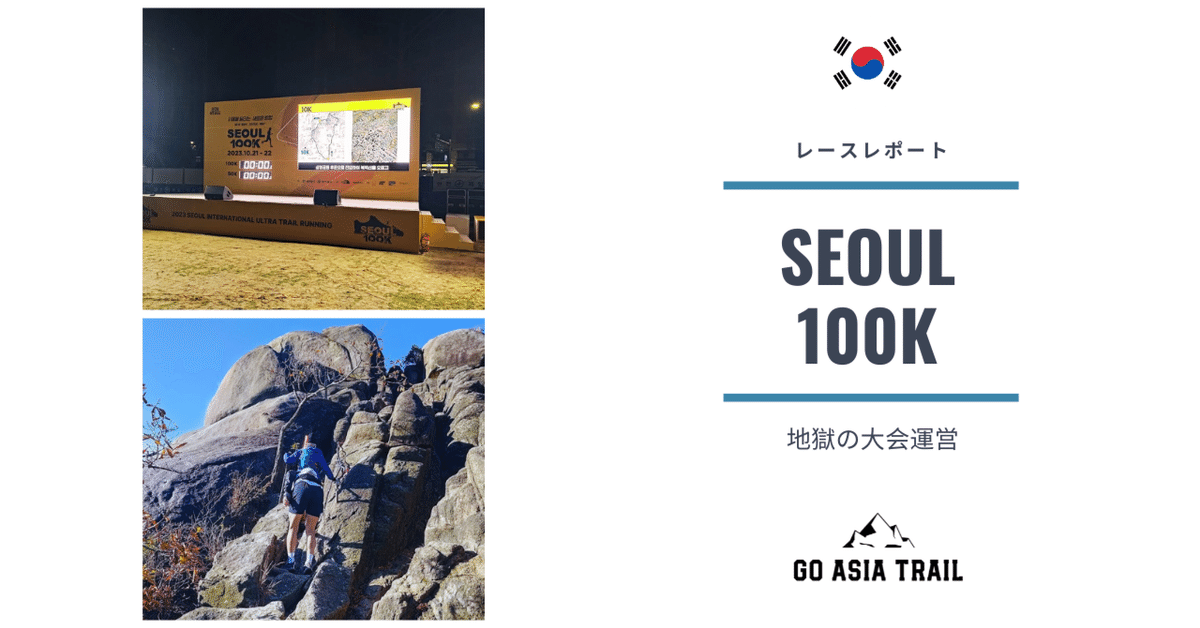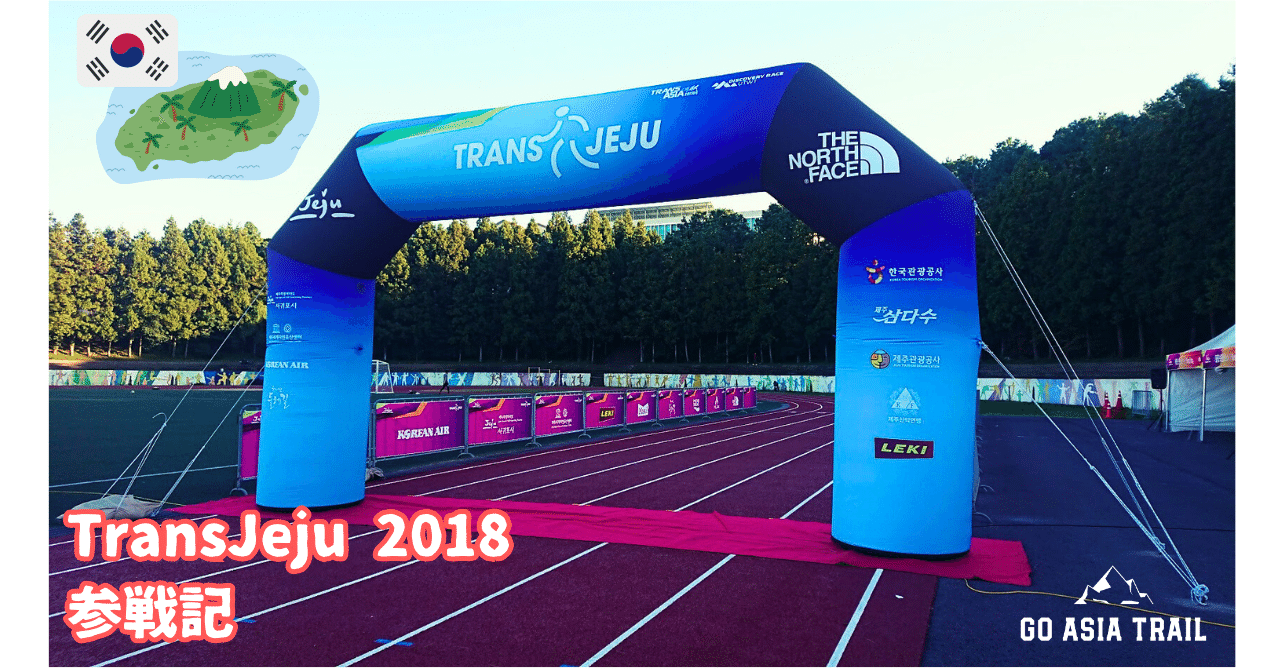I participated in the SEOUL 100K trail running race held in Seoul, Korea on October 21-22, 2023. This was my first race in Korea since TransJeju in 2018. And it was also my first visit to Seoul myself.
And although it was also my first 100km race in 4.5 years, I have to tell you the results first: I had to make a strategic withdrawal (DNF) decision after leaving U3 (33km) once, but had to change back halfway through the race. The reason was a right knee injury. Although it was an ultra distance with the Corona Disaster in between, I personally feel that I am glad that I took on the challenge, even though the result was disappointing.
As for my evaluation of the SEOUL 100K event, while the location, course, views from the mountains, and hospitality of the volunteer staff were good, there were major issues with the event management that completely canceled out the good qualities. The specific details will be described later, but there were major mistakes related to the runners' continuation of the race, which could not be overlooked as "a common occurrence in overseas races.
Outline of SEOUL 100K
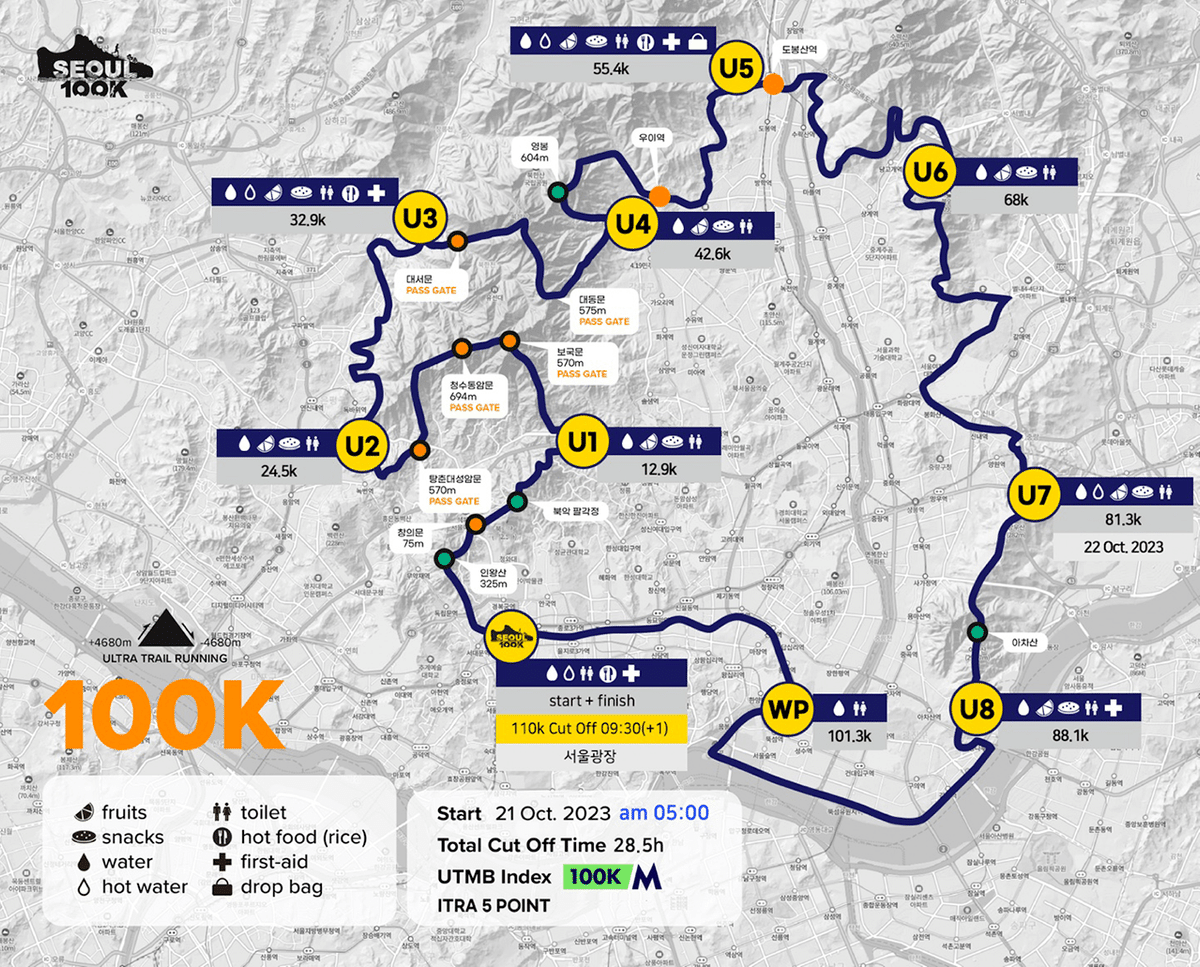
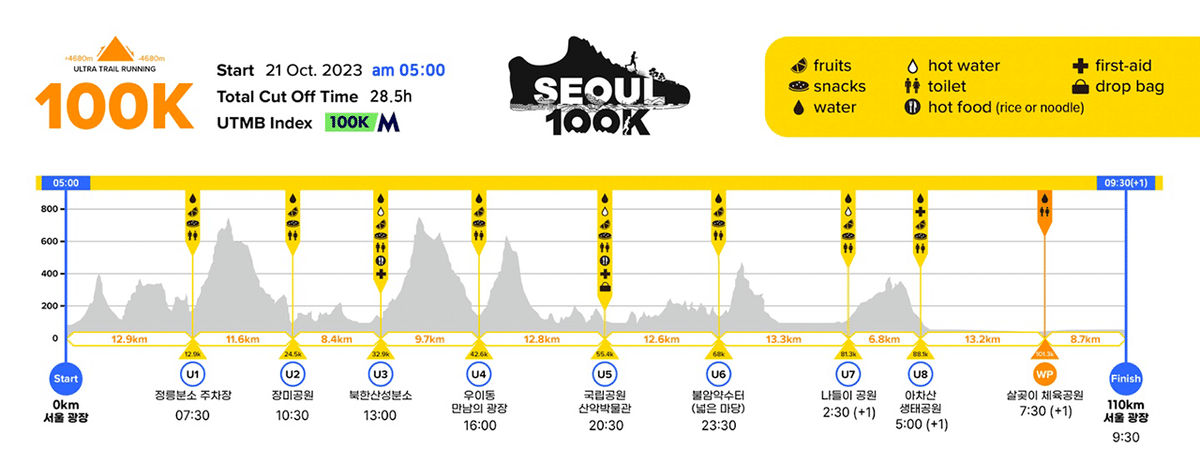
The SEOUL 100K is an event with the main course in "Pukhansan (Mt.) Bukhansan National Park" in the northern part of Seoul, with three distances: 100 km, 50 km, and 10 km. The organizer is a Korean newspaper called The Dong-a Ilbo, and the main sponsor is THE NORTH FACE.This event has been held since 2019, but took a break for a while due to the Corona disaster, and resumed last year in 2022.
The start/finish line is at a place called Seoul Plaza, right in the middle of Seoul. Seoul City Hall is next door, and Myeongdong, Seoul's largest downtown area, is within walking distance. The KAL limousine bus from Incheon International Airport takes approximately 1 hour and 20 minutes to get to Seoul Plaza, and it is possible to go directly to City Hall without changing trains.
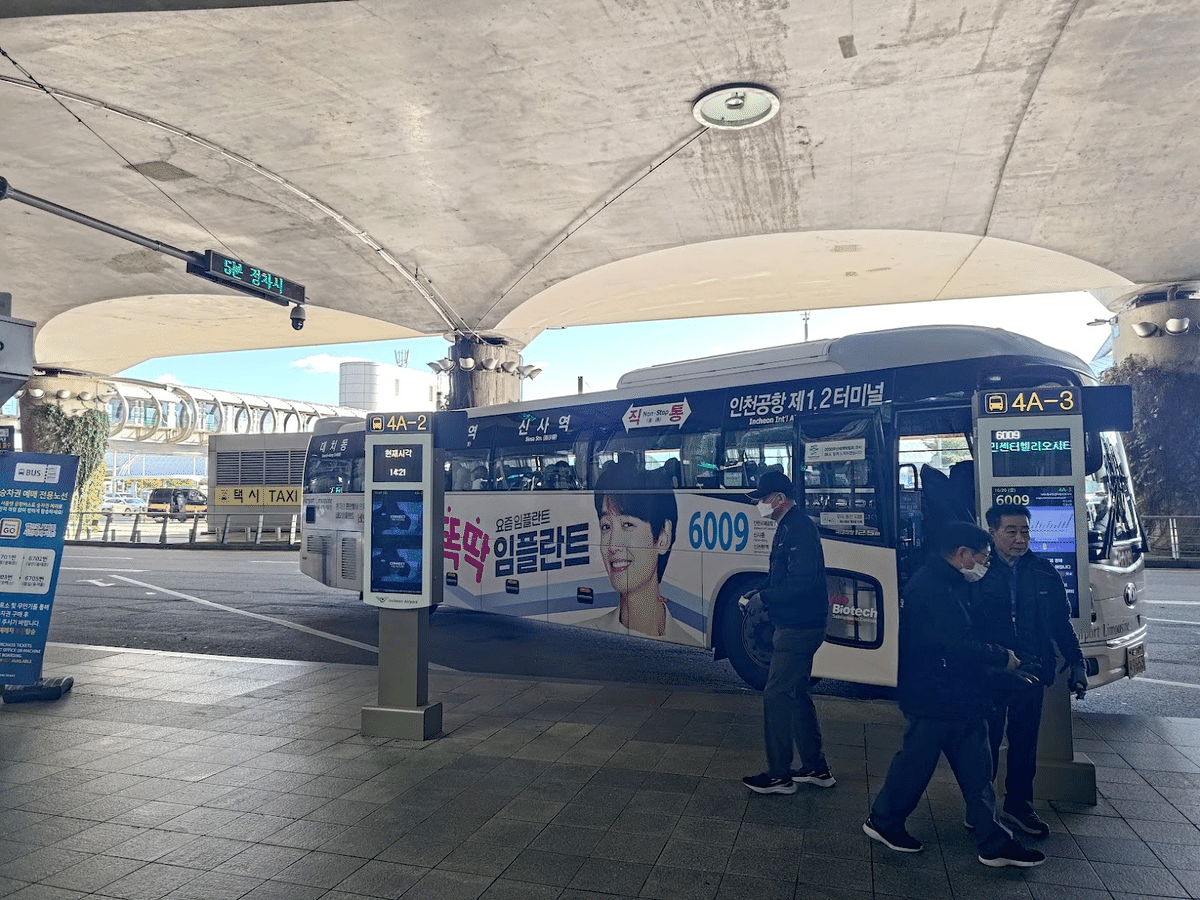
Since the start and finish points are in the center of Seoul, there is no problem at all regarding lodging capacity. However, the cost of living in Seoul is high, especially in the Seoul Square area. I was lucky enough to book a room at the Hotel Daewoo Inn, which was relatively inexpensive despite its age, and was run by an owner who spoke Japanese. It is conveniently located just a 5-minute walk from the venue and has a number of restaurants and convenience stores. The hotel was clean, although the facilities were not distorted by its age.
They also offer a cleaning service for clothes and other items, and if you ask at the front desk, they will do it for 10,000 won (about ³,100), which takes a few hours. The clothes are returned neatly folded, so packing was easy.
After running SEOUL 100K
The day before the race. The venue was not set up, and there were no bibs!
The registration for Japanese runners will be held at Seoul Plaza, the start/finish point of the race. However, when we went to the venue, we found it in this state.
Apparently, Seoul Plaza had been used for another event until just before the event, and the photo above shows it being taken down. At first, I wondered if I had gone to the wrong venue or the wrong date and time.
There was a person in charge of GONTEX, an entry agent and local support company for Japanese runners, who told me a shocking fact... "The numbers for Japanese runners have not arrived yet, and they will not arrive until after 19:30...". So, since it was doubtful whether the race site would be set up and whether the numbers would actually arrive even at 7:30 p.m., we decided to start the registration one hour before the race day the next morning.
By the way, the race site was properly set up the next morning. It was probably set up overnight. What a black working environment...
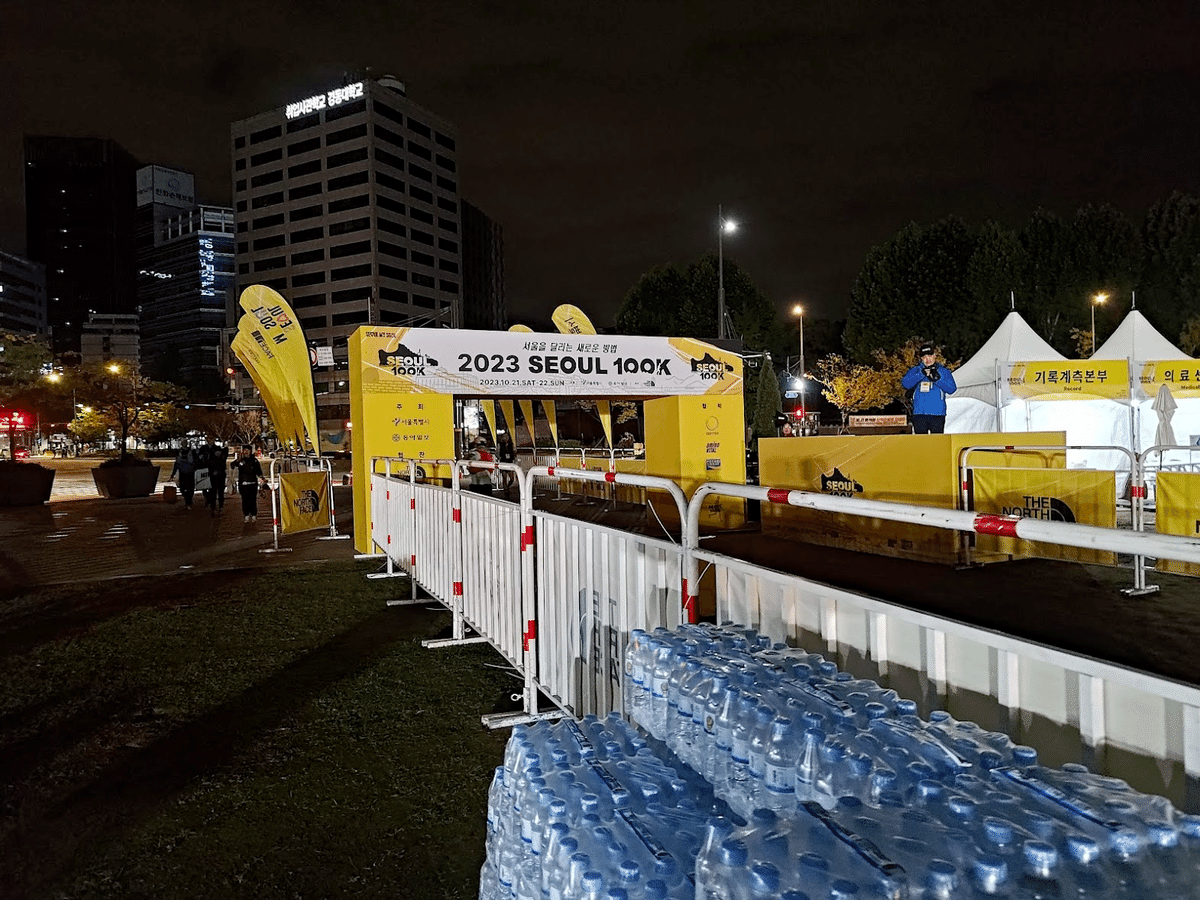
Seoul is located at about the same latitude as Niigata Prefecture in Japan, so it is a bit colder than Osaka or Tokyo. However, it was even colder than that when I arrived there.
The owner of an inn told me that it was unseasonably cold for the citizens of Seoul only during the tournament period, and this was also true when I asked him about it. The lowest temperature on the day of the competition was 4 to 5 degrees Celsius, and the highest was 14 degrees Celsius or so. It was so cold with only the warm clothes I brought from Japan that I had to hastily buy a fleece at UNIQLO in Myeongdong.
When I actually ran the race, I really felt like I was running a winter trail race because the race started at 5:00 in the morning. Also, even during the daytime, the temperature drops to a certain degree as you go up the mountain, and I wore a rainwear jacket for most of the race.
Also, after leaving the first aid station (13km) and entering the trail, it suddenly started raining heavily. The temperature was cold and the rain could cause hypothermia if the weather was bad. The weather forecast did not call for rain, so we realized once again that "the weather in the mountains is changeable.
The course used rocky ridges, and there were many rocky areas.
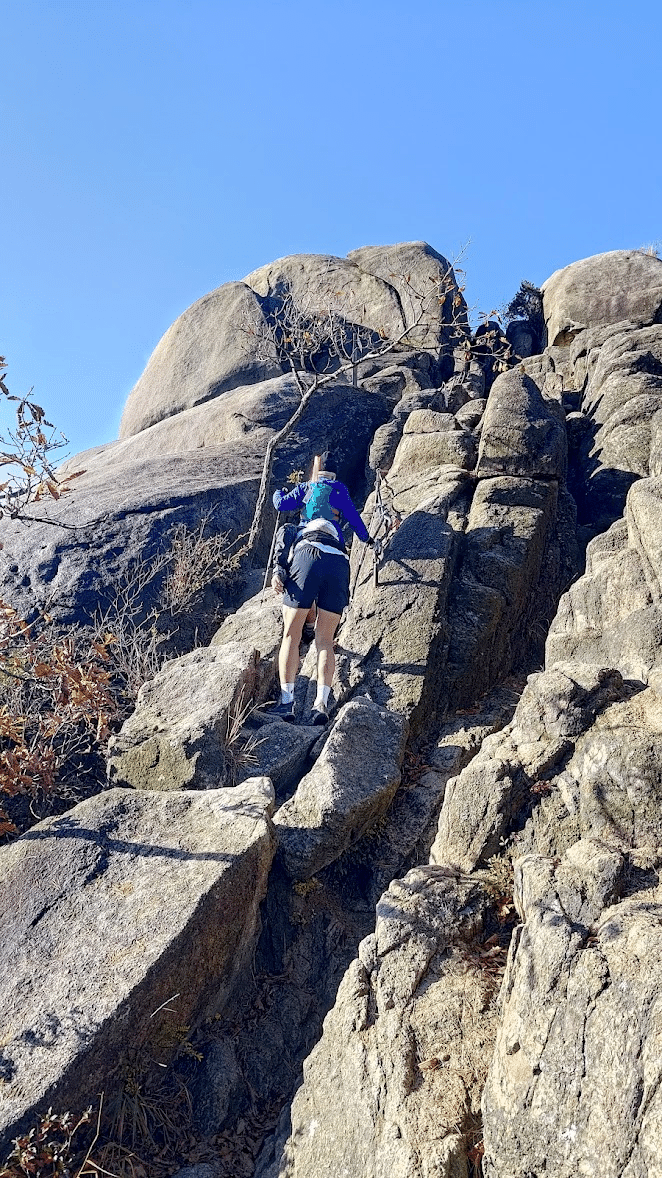
According to the information from last year's SEOUL 100K runners, the course was "generally run on rocks," so I knew this beforehand, but I still felt like I was running on rocks quite a bit.
Originally, the trails around Bukhansan National Park had many bare rock surfaces, and in addition, there were rocks and stone walls here and there that were hard on the knees and feet, like the Great Wall of China.
I was not used to such a rocky course, and the first half of the race was very tough, so I had to run hard to get caught at the barrier. Since I arrived at U1 and U2 about 10 minutes before the gate, I only had a few minutes to stay at the aid stations, and to be honest, I had never been so slammed in a 100 km race before. Because of this, I was not able to take many pictures with my phone or action cam!
The course from U2 (24.5km) to U3 (33km) was relatively easy to run with few ups and downs, so I picked up the pace and arrived at U3 55 minutes before the barrier gate. However, before arriving at U3, I began to feel discomfort in my right knee, and I was not sure if I would be able to continue the race.
I decided to make a strategic withdrawal, and it was the right decision.
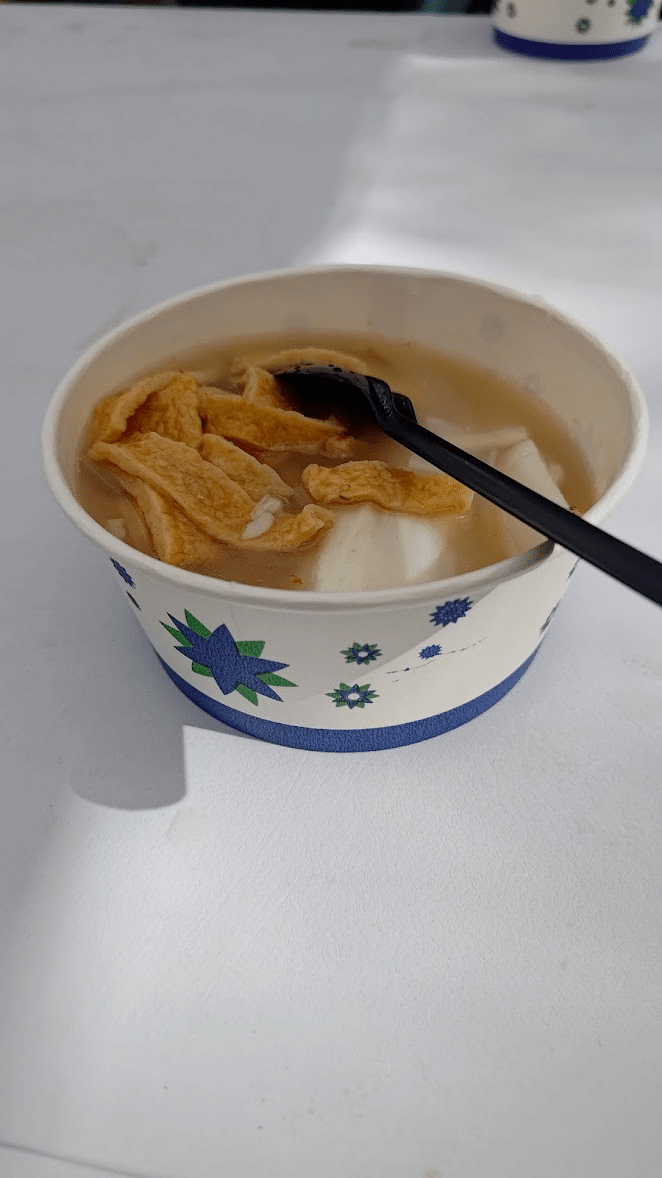
At the U3 aid, there was an equipment check. At any rate, I had everything presented to me, so I passed without difficulty (more on that later).
Since I had a little time to spare at the barrier gate, I had the Korean-style porridge shown in the photo above. It was a little warm, but I was relieved that it was the first decent meal I had had since the start of the race. Most aid stations in Korean races serve chocolate pies.
I took a longer break here, stretched to deal with some discomfort in my right knee, and left the U3 aid after about 15 minutes of rest, feeling uneasy. Then, for a while, we move up a gentle road climb, but after about 2 km, a steep rocky climb appears.
U3-U4 is the highest part of the SEOUL 100K, and the course was also known to have many rocky sections. If we ran any further, not only would our knees get worse, but we would also risk getting stuck and not being able to descend.
After much deliberation, we decided to follow our instincts and make a strategic retreat. We decided that it would be less risky to turn around and return to U3 than to continue on. On the way back to U3, I met a volunteer staff member and told him that I had to turn around because of knee pain and that I wanted to return to U3 to DNF. But the staff is there and I will contact them," he replied. Anyway, I went back and found that the aids at U3 had already been taken down and a few staff members were waiting for me.
The rest of the aide's staff used the translation app on my phone to ask, "Are you having trouble?" and asked, "How do I get back to the starting point?" I answered, "There is no shuttle bus, so I will call a cab. He was able to arrange a cab for me, which was very helpful. The cab then came right away, and after about an hour's ride, we returned to the starting point, Seoul Plaza. The fare was 20,000 won, which was inexpensive considering the time spent on the ride.
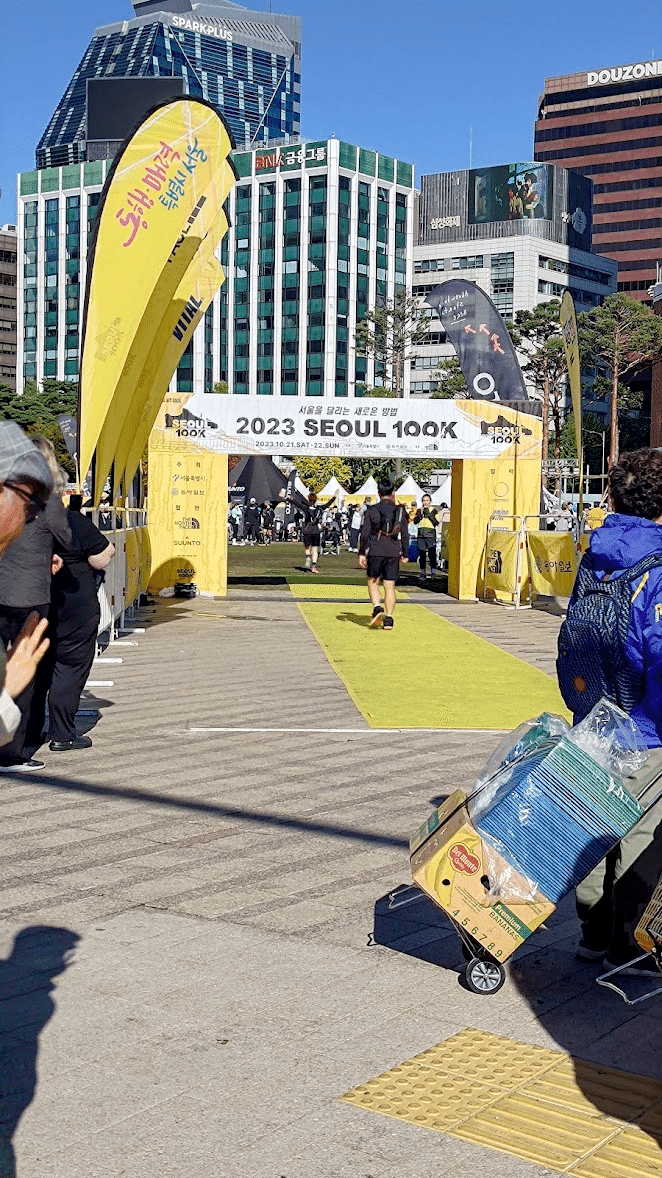
After returning to the hotel, I took a shower and a nap at the hotel for a while, but later in the evening, when I started walking, I had knee pain and it was hard to walk. I realized that my decision to make a strategic retreat there was right after all. If we had continued on to the U4 aid, maybe the descent would have been difficult. It is a trail race until you get home safely, so safety is always the best.
Night view of Seoul city, rocky mountains, and other scenery
As expected of a city of 9.4 million people, the night view was very beautiful. Although the race started at 5:00 a.m., the sunrise was after 7:00 a.m., so we had to run at night for about two hours.
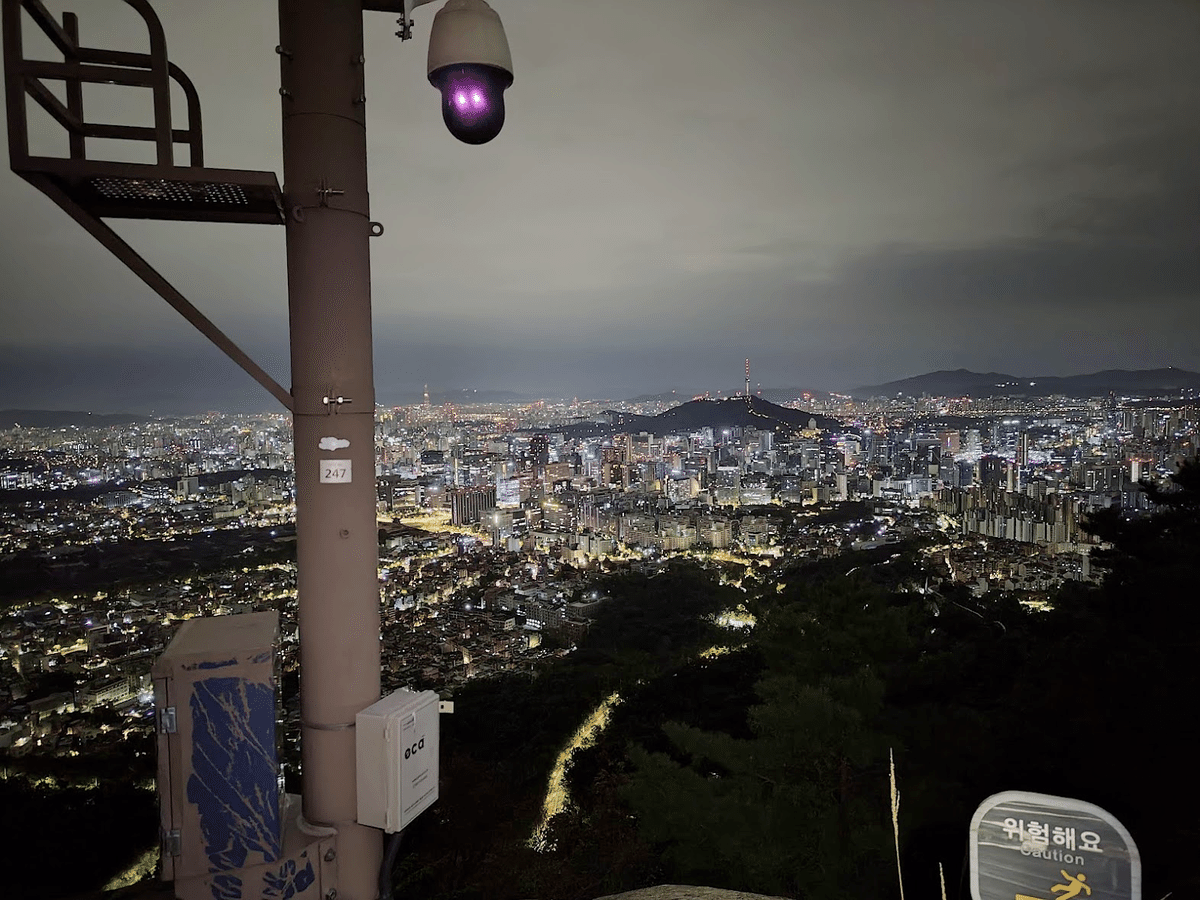
There were some old Korean-style buildings on the course, which made me feel like I was driving in Korea.
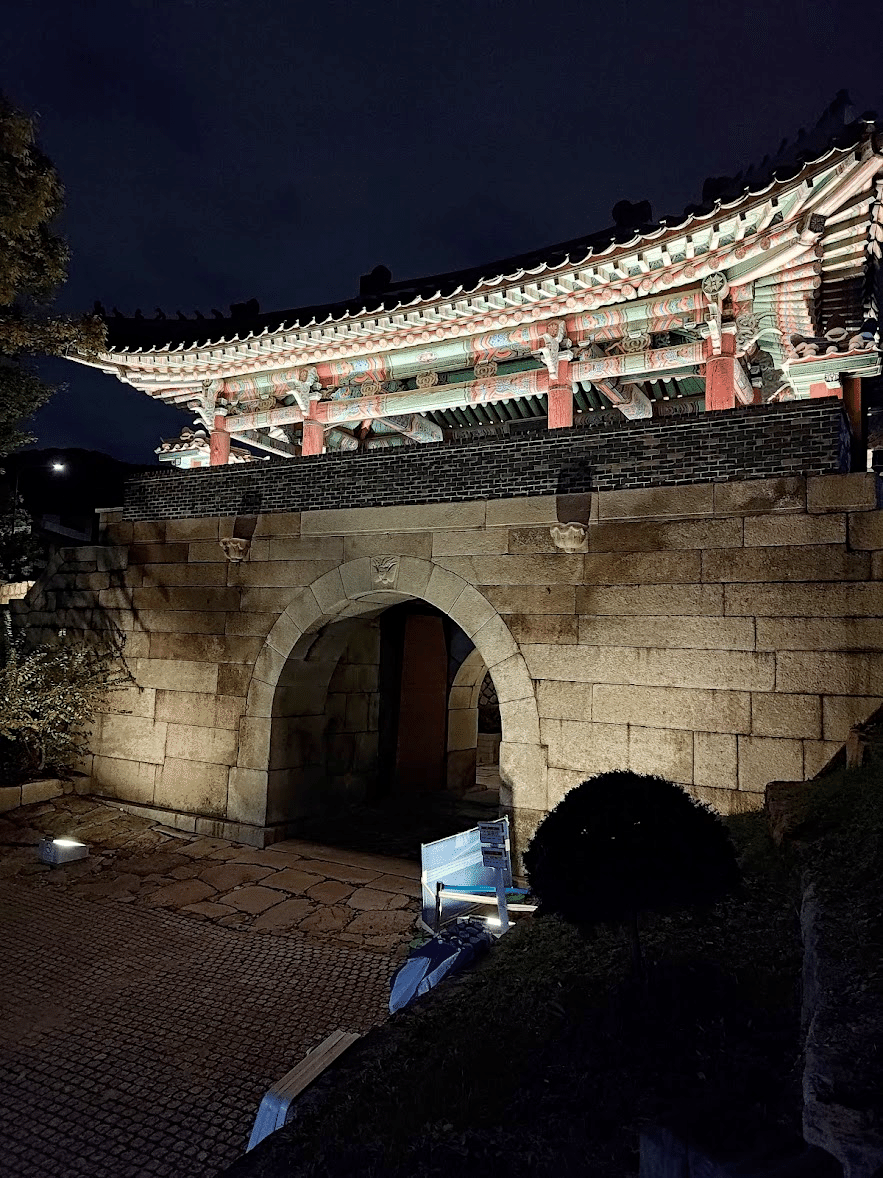
And then there was the view from the top of the mountain. The mountain tops are located at a higher longitude than Osaka, so we were able to enjoy the autumn leaves in the mountainous areas a little earlier than usual. Also, perhaps because it was raining on the way to the summit, there was a sea of clouds, which gave the view an ethereal feeling. The pictures may not show it well, but seeing it with my own eyes, it was a great view. It made me want to go back there again, even if it is not for a private race.
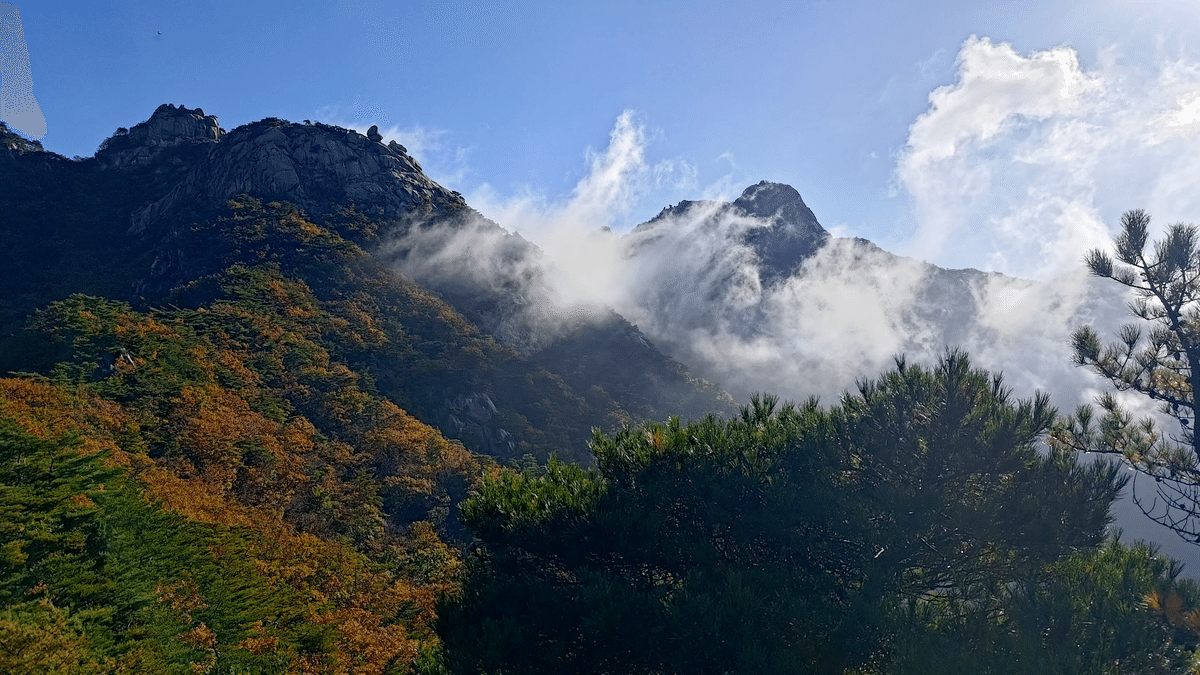
I think Mt. Hallasan on Cheju Island was similar to this. I wonder if Korean mountains are rocky...
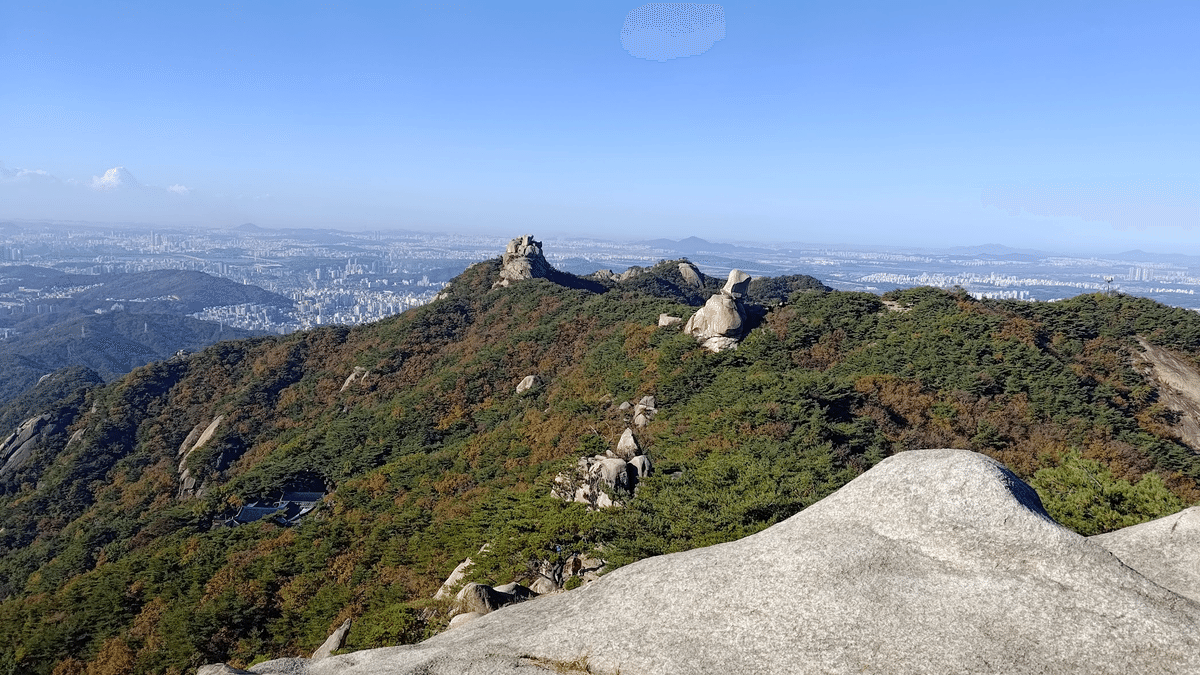
Problems with tournament management
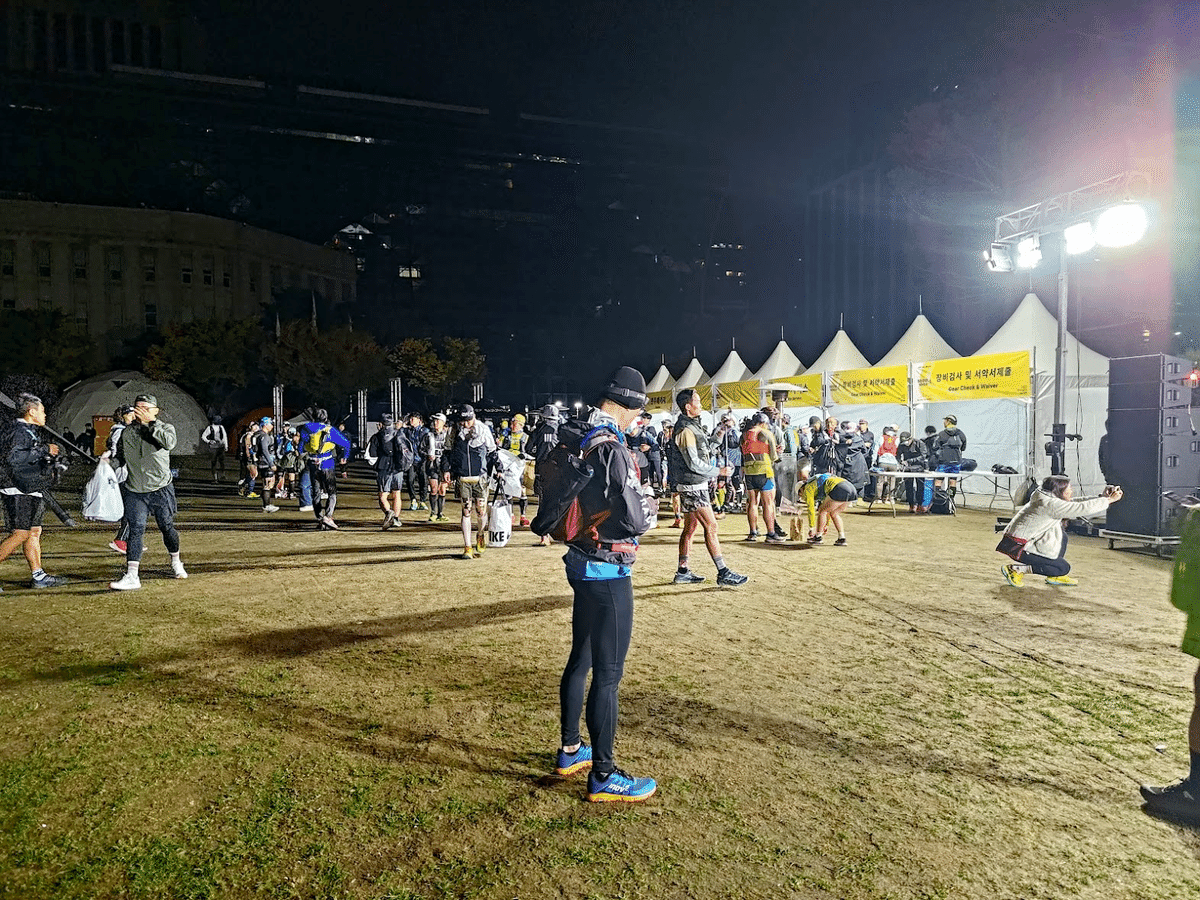
The scenery and the hospitality of the volunteer staff were great, but what was disappointing was the quality of the event management. I have been trail running for more than 10 years, but I have never seen it this bad. It was even worse than my personal worst event ever run in Taiwan, the Qilan 100 Forest Road Yueyeo.
The following is a list of problems I experienced and heard about from other runners.
- The venue was not set up even though it was the day before the race.
- Japanese runners' bibs did not arrive on time.
- The GPX data provided by the race organizer differed from the actual course.
- Equipment not on the required equipment list was checked at the U3 aid station.
- Some drop bags were not delivered at the midpoint of U5 (55km).
The most critical ones are 4 and 5, and there are many more details, but they are too numerous to mention here.
Items not on the essential equipment list were checked at the U3 aid station.
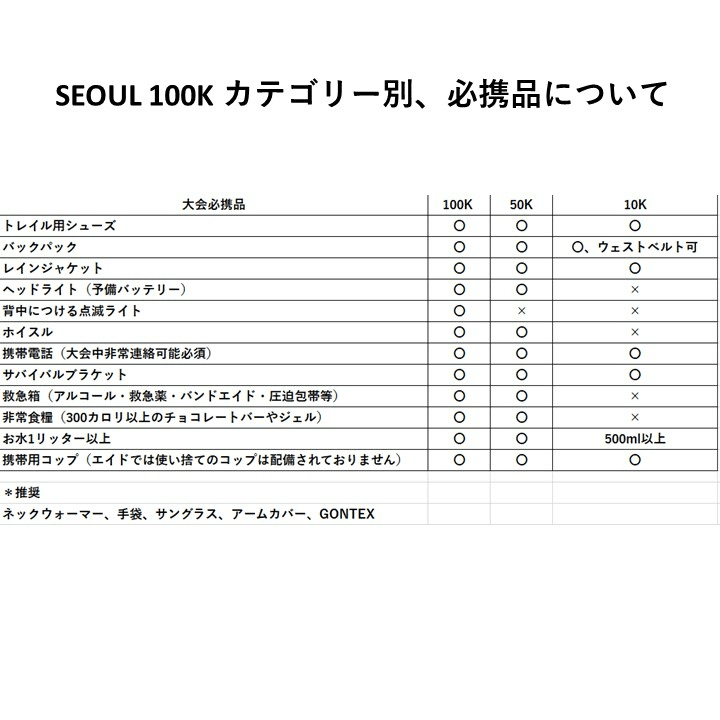
Although the list of essential equipment for the SEOUL 100K is as shown above, the following items were checked at the U3 aid station.
- Long sleeve shirt
- Long pants
I am not good at cold weather, so I happened to carry the above two items at my own discretion, but my friend who participated with me did not carry long pants and was penalized for not carrying them. When I was checked, I thought to myself, "Was a long sleeve shirt and long pants on the list?" but he objected to the staff saying "They're NOT mandatory gears!
According to the rules, if you don't have the mandatory gear, you will be penalized (+30 minutes) or disqualified, but the local staff was not sure what to do after that and replied that it would be decided by the headquarters. So, my friend was puzzled as to whether he could continue the race or not.
Drop bags had not arrived for some runners.
I did not experience this directly as I DNF'd during the race, but a friend of mine who ran with me arrived at U5 and there were no drop bags. There were several other Japanese runners who had no drop bag. I am not sure if there were similar cases among Koreans and other foreigners.
This mistake is fatal and can greatly affect a runner's race plan, forcing him to make a DNF decision in some cases. If I had encountered this, I would have definitely DNFed. The reasons are as follows
- Insufficient headlight capacity
- Lack of additional warm clothing (in the weather at this time, warm clothing in a drop bag is a must)
- Lack of provisions/supplements for the second half of the race
As for the headlight, the plan was to replace it with a high-end headlight at U5. For all intents and purposes, the light I used in the morning would not last through the night and would run out of battery power halfway through the race. As for the food, I might be able to get by with a large amount of chocolate pies from the aid stations, but the headlamp and warm clothes would be a problem for the continuation of the race. Maybe my drop bag has not been delivered either (since I left it at the same time as my friend).
Incidentally, I heard that the drop bag stuff was at the start and GONTEX staff drove it to the next aid (U6).
Other than this, many things were happening during the night.
After the race
Despite the terrible management, I now have good memories of the race. I am glad that I had such a bad experience, because it will help me in my life in the future!
However, if I were to run the race again next year, it would not be an option at this point. If I had to run the same race in Korea, I would choose TansJeju by UTMB, which was held two weeks ago, as TransJeju is run by the same organizer as TransLantau by UTMB in Hong Kong and has a good track record.
The GONTEX staff said, "We had more trouble communicating with the race headquarters than last year.
However, it was a relief that all the volunteer staff were friendly. Drop bags could be picked up after midnight on 10/22 (Sun.) (maybe they were at the starting point all along), so after picking them up around 7:30 AM, we received various souvenirs.
One of them was a breakfast coupon, which they told us we could take to a barbecue restaurant (?) a short distance away for a free meal. I was told that I could eat for free if I took it to a barbecue restaurant (?) a short distance away. But since I can't read Korean at all, I asked him for directions and he told me to use a map app to find this place (he said there was a 7-11 nearby).
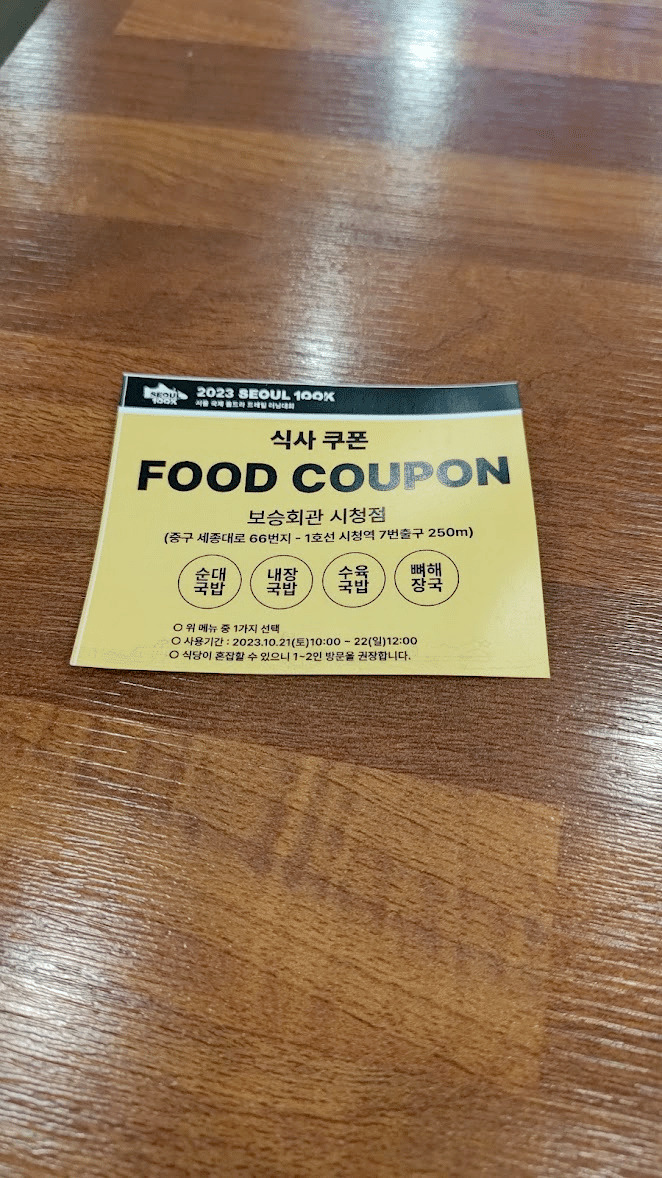
I asked him what I could eat with this ticket, and this is what I ordered.
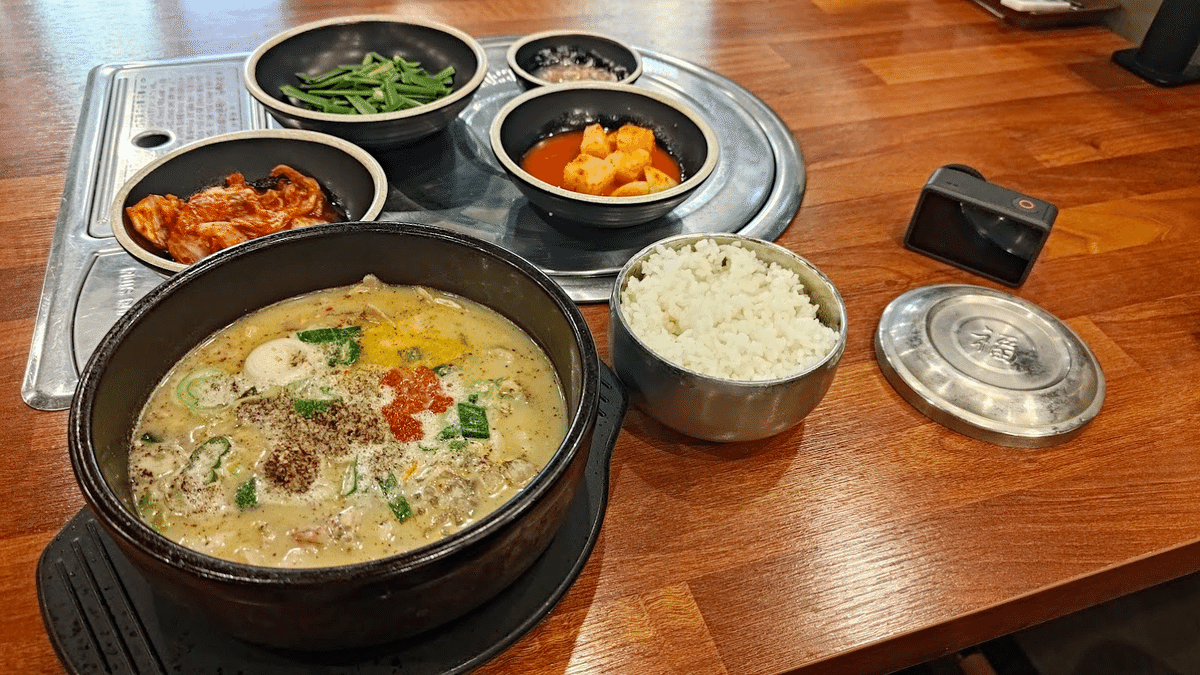
Beef kuppa is a dish of beef bone soup, and I wondered if Korean people eat such heavy food in the morning. I thought as I ate it. It tasted great, but it was too heavy for me to eat in the morning. It was great for dinner. I couldn't eat all of it.
Sunday, 10/22, I had the whole day free, so I went sightseeing in Seoul.
Since I DNFed early, I had a whole day free on Sunday. So I decided to go sightseeing in Seoul.
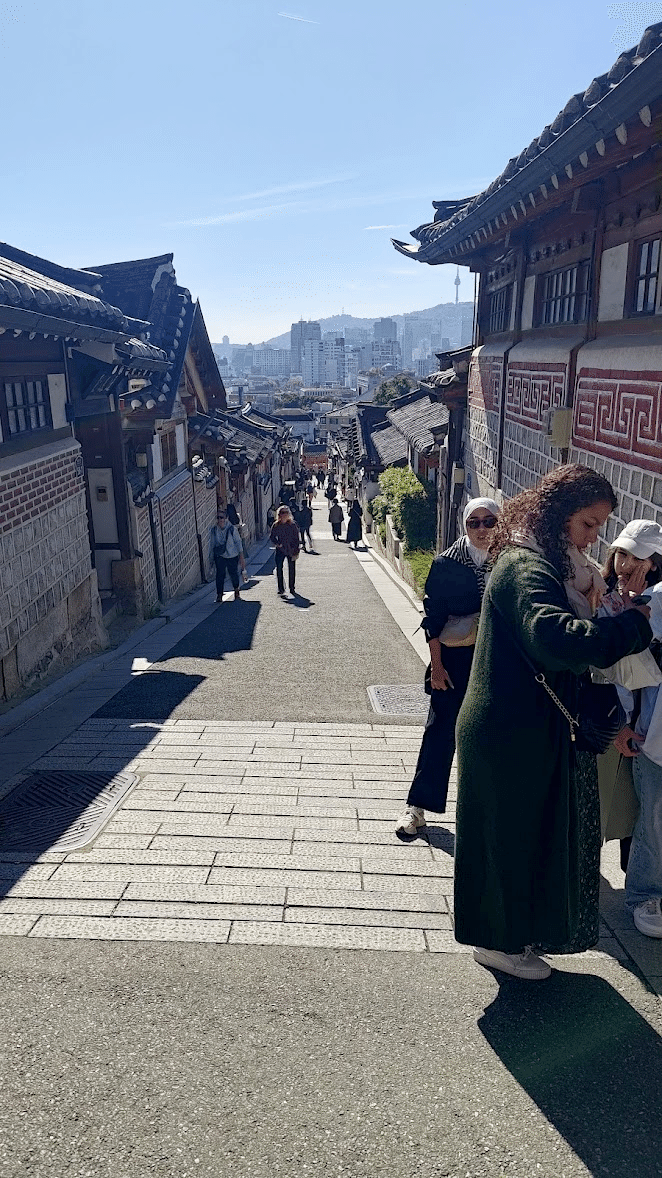
Since I had no plan for sightseeing, I went to "Bukchon Hanok Village," an Instagram-worthy spot, after checking it out on Google. However, there were too many tourists, and I personally felt it was not a good place to visit. I guess it was supposed to be a quiet town, but it became over-tourism, and the original goodness of the village was not shown. The same problems that have been occurring in Japan are becoming more and more pronounced in Korea.
So, I decided to stop visiting famous spots and switched to wandering around museums and parks, which I often do when I travel abroad.
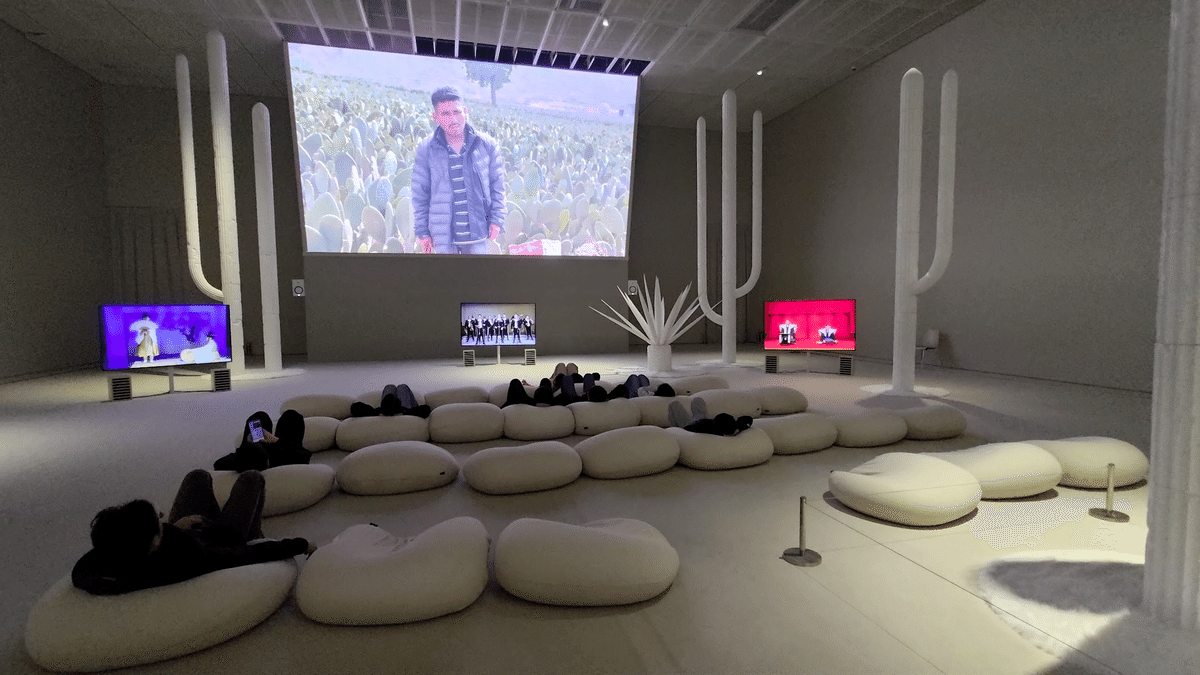
Another wild bird that often chirps when I enter Seoul is this one called magpie. I tracked down the bird because I had never heard it in Japan, and found that this black-and-white bird was the one responsible. In Japan, the magpie is only found in a part of Kyushu, and in Korea, it seems to be the national bird. It is said to be a member of the crow family. I have been into wild birds recently.
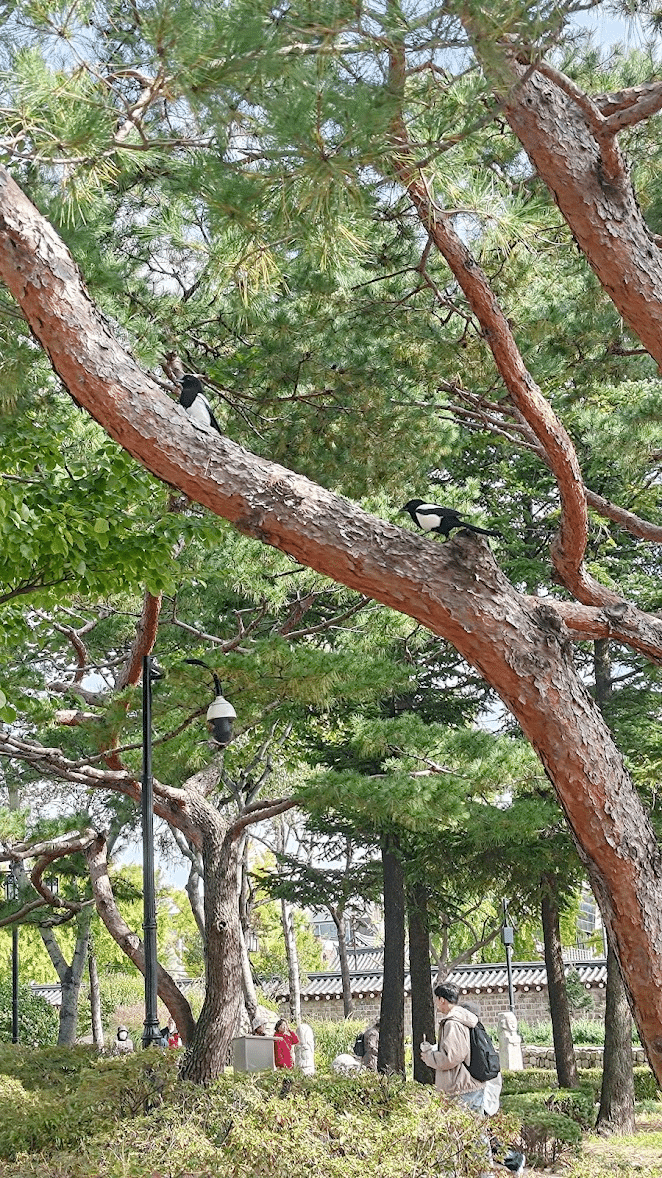
Also, there is a small calm river like this flowing in the middle of Seoul. It is called Cheonggyecheon (Cheonggyecheon River), and in fact, the last leg of the SEOUL 100K is said to be run here. Is it like the Dotonbori River in Osaka?
It is a place of relaxation for the citizens of Seoul, and personally, it has become my favorite spot. There were many wild birds such as little egrets, doves, and magpies.
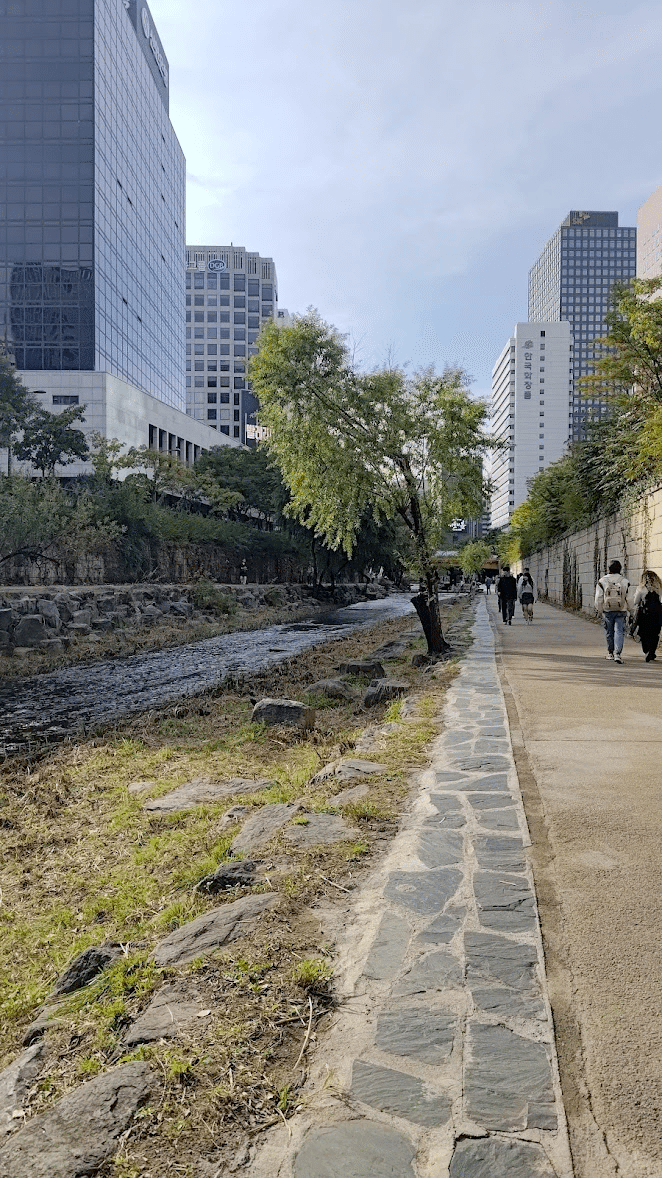
Finally, my friend and I went to a barbecue restaurant in Myeongdong and had some samgyeopsal. It was very tasty. I realized once again that the best way to enjoy a Korean race is to run a short race and eat samgyeopsal at night. However, prices in Myeongdong were high, and it cost about 90,000 won for two people. (I think it was about 40,000 won for four people when we went to JEJU Island.
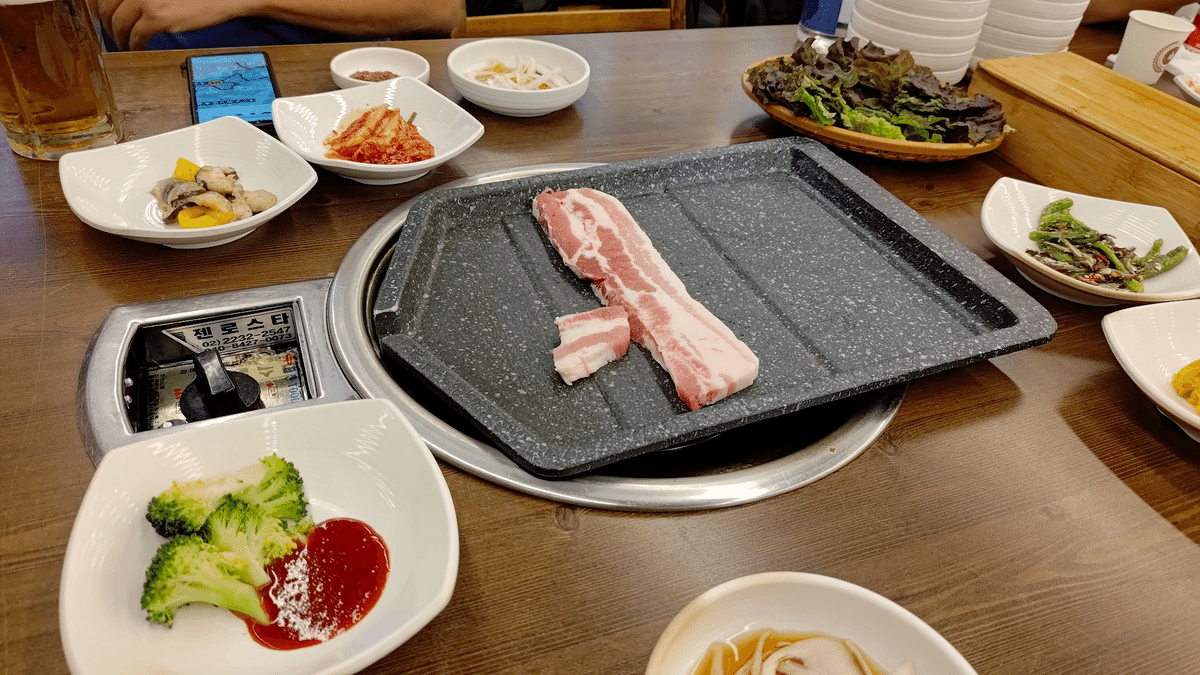
So, that was our 4-day healthy trek and trip to Seoul. Thanks for reading this far.
